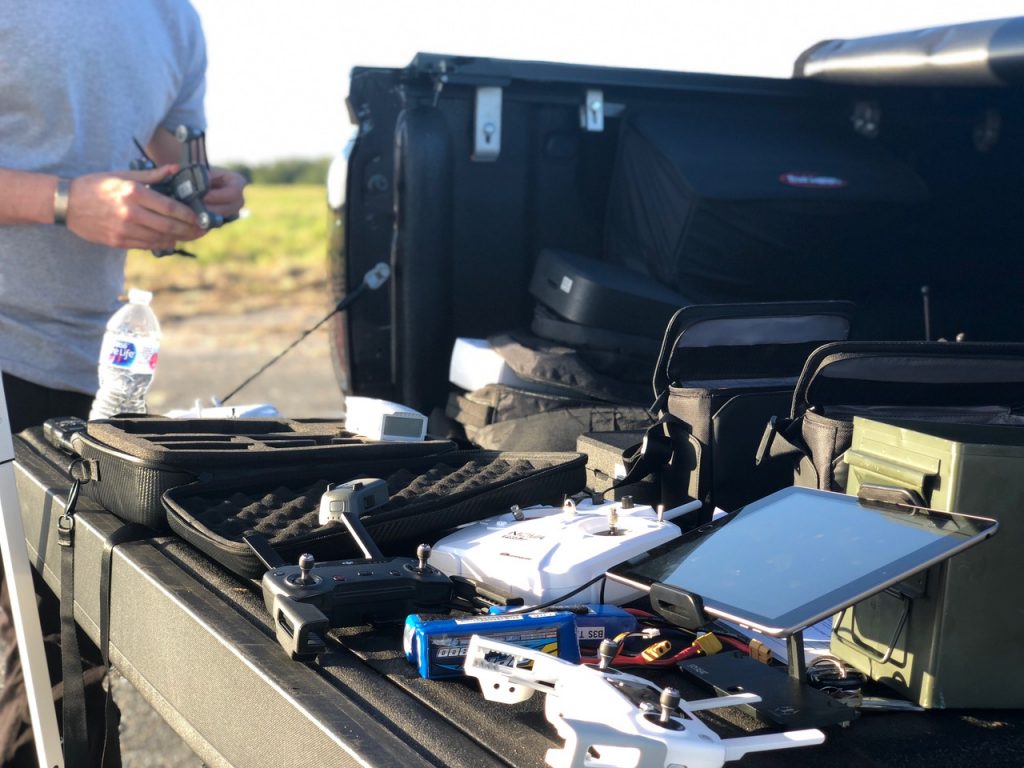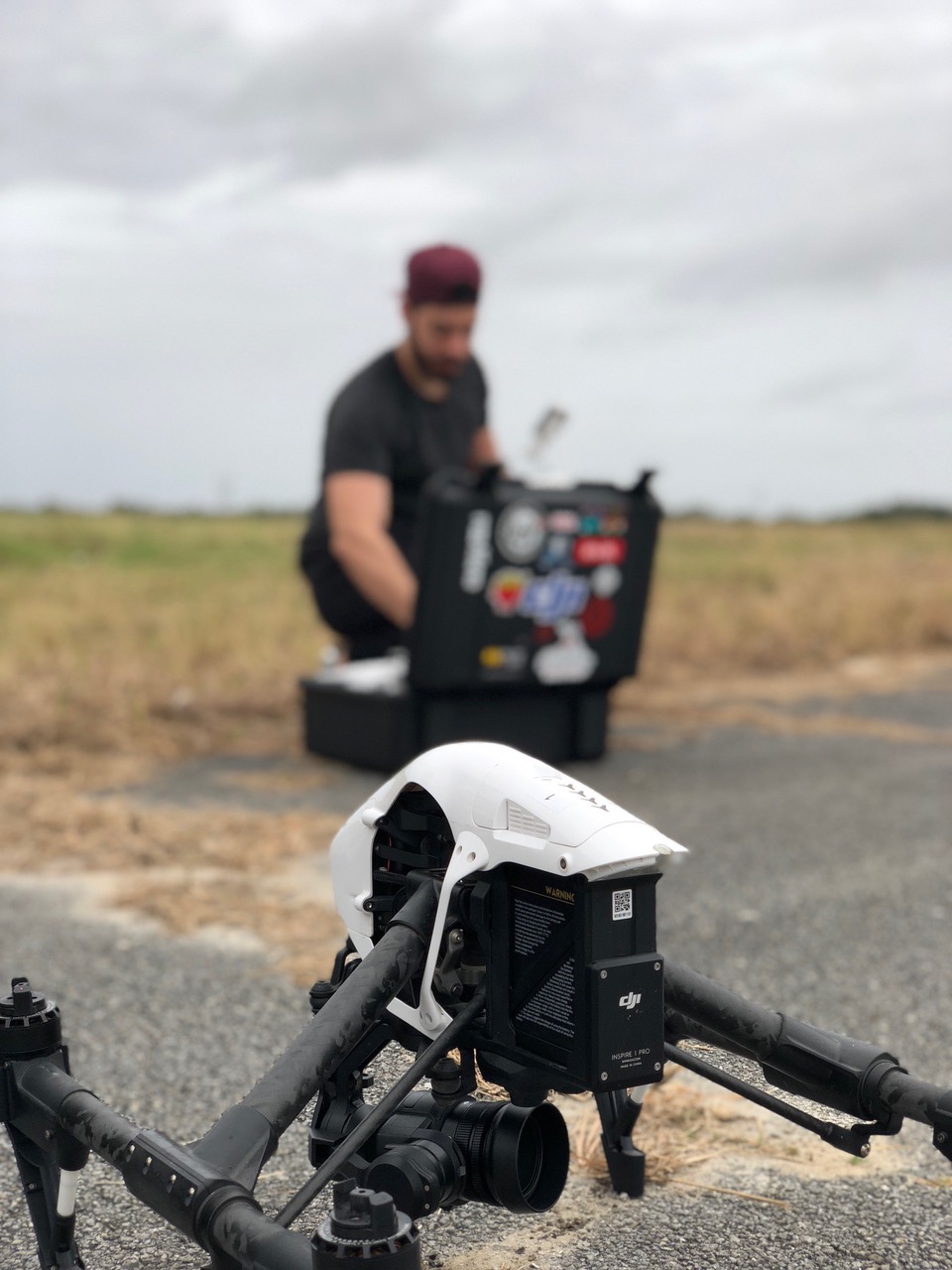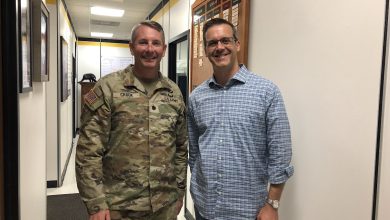Drones Prove Promising for First Responders
Many great origin stories begin at a bar. However, instead of with 37 cents, this one starts with a game of chess and ends with a burning building and a rescue at sea.
College of Aeronautics Associate Dean Ishmael Cremer was hanging out at Lost Shirt Brewing Company when he struck up friendly conversation with the bar’s proprietor and retired firefighter Johann Brockhausen.
Unbeknownst to Cremer, Brockhausen was a fellow Florida Tech alumnus and fraternity brother. Thankfully, a mutual friend pointed out that both men were part of the Panther family.
“We were playing chess, and we started talking about his drone projects,” Brockhausen said. “I knew it would be a great thing for the fire service to use, so I immediately connected Ishmael to Brevard County Fire Rescue District Chief Tom Klein.”
Cremer’s passion for drones is infectious, so it’s not surprising that Brockhausen would want to get Brevard Country Fire Rescue (BCFR) involved.
This same passion is what drives Cremer to lead Florida Tech’s minor program in unmanned aerial systems (UAS). While many students originally gain interest in drones for the amazing cinematography opportunities, this program gives them the chance to theorize and explore new applications while giving back to the community.
With Brockhausen’s coordination and Cremer’s help, a handful of students began to develop a Drones 101 course for Klein’s BCFR crew.
“I knew if we did this, we could become a cutting-edge fire service,” Brockhausen said.
You might not have suspected that a class was in session if you saw the several uniformed firefighters as you passed by Florida Tech’s intramural practice field as drones buzzed overhead last fall.

“They were really excited and genuinely soaking up as much information as they could,” UAS student and Drones 101 facilitator Zachary St. Amande said. “My favorite moment was when one of the guys exclaimed he was going to buy a UAS later that day. It’s a really good feeling knowing you introduced someone to a new hobby.”
After two days of what felt like playing with toys, with Cremer and his students on hand to answer questions and geek out about drones with them, 11 BCFR firefighters completed their Federal Aviation Administration ground course and a full day of flight training.
“It was an absolute pleasure to help those guys out,” St. Amande said. “They have an incredible job to do every day, and being able to give them a new lifesaving skill was something you rarely get to do.”
The course was some of the crew members’ first times flying drones. But by the end of it, everyone was flying grid patterns like professionals, and they were ready to undergo hands-on training to see how they could actually implement them in the field.
During the first training exercise, BCFR recreated a roaring building fire during a controlled research test. As the flames consumed the building, drone operators practiced using thermal imaging to quickly identify hot spots and develop a strategy to efficiently control the fire.
“Coming up with strategic plans with the drone, that’s the most exciting thing to me,” Brockhausen said. “To have it up, looking for collapse hazards, solving problems immediately, especially on large buildings, means less risk for the crew.”
Brockhausen knows firsthand what a difference a drone would have made for him and his crew during his firefighting career.
“During an eight-care vehicle accident on [State Road] 528, there was no visibility. It was smoky and foggy. In those conditions, it’s very hard to identify the victims,” he said. “If we had a drone in their air on the way to the call, we could have used the thermal imaging to get to the victims more easily and quickly and even identify where fuel leaks were.”
For the next exercise, four ocean rescuers jumped off the back of a Jet Ski to reenact a “lost at sea” scenario. Utilizing a drone, the operators practiced their grid-searching skills and quickly located the “victim.”
“I hope they go on to adopt the technology and use it to better help the community and keep those guys safe,” St. Amande said.
After this successful collaboration, more agencies and organizations are connecting with the College of Aeronautics to not only get their drone certifications, but also to leverage drones for their unique needs.
From land management for Brevard County’s Environmentally Endangered Lands Program to new construction mapping and monitoring for an animal rescue group, the potential collaborations and research opportunities are sure to keep Cremer and his students very busy.





